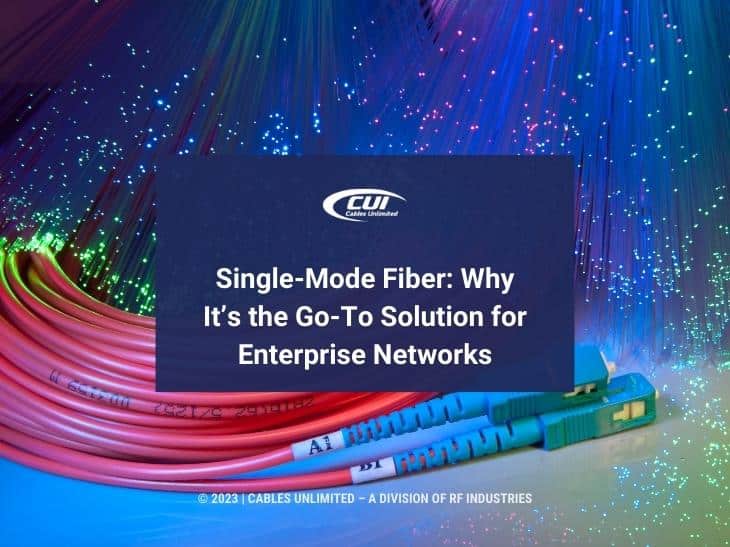Single-mode fiber optic cable provides high-speed and high-bandwidth connectivity. That’s what makes it the go-to solution for enterprise networks.
This article closely examines the role of single-mode fiber (SMF) in those networks, from definition to advantages and applications to selecting a manufacturer and supplier.
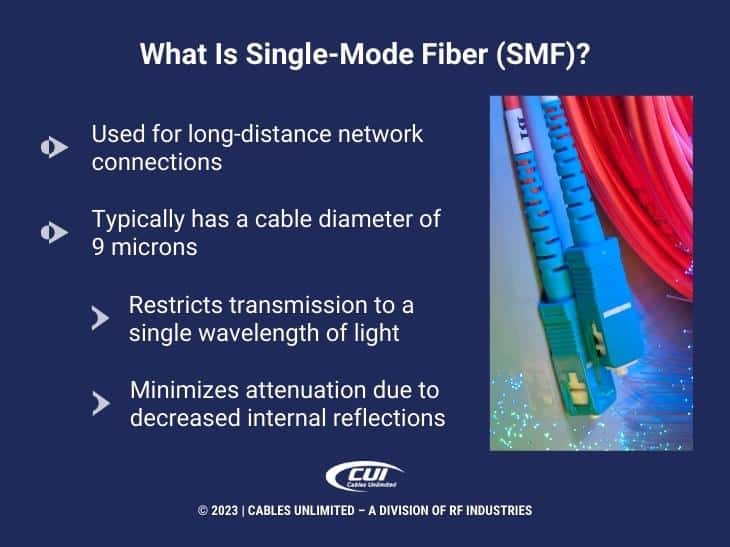
What Is Single-Mode Fiber (SMF)?
There are two major types of fiber optic cables: single-mode and multi-mode. Single-mode cable is used for long-distance network connections. It typically has a cable diameter of 9 microns, which restricts transmission to a single wavelength of light. This minimizes attenuation due to decreased internal reflections.
Multi-mode cable has a greater diameter, running from 50 microns to 62.5 microns. It can handle several wavelengths of light and multiple signals at high speeds. It’s used over shorter distances within a data center or local area network.
The illustration below provides some perspective on the optical fiber core diameter differences between single-mode and multi-mode fiber cables.
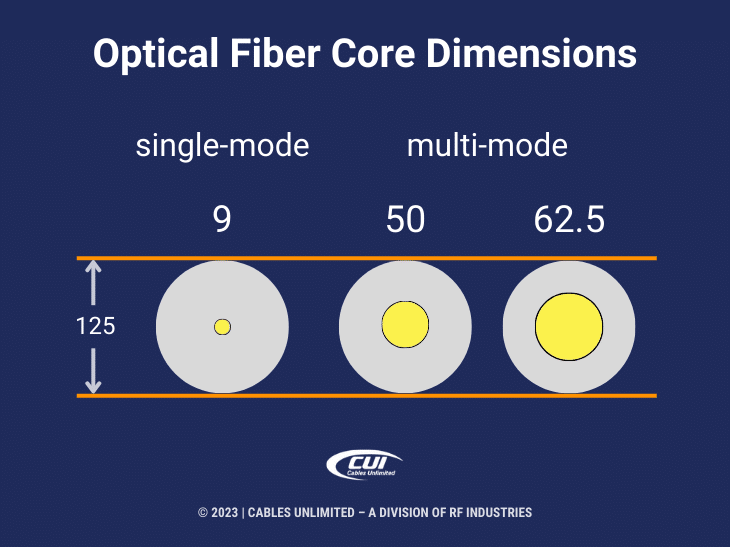
Advantages of Single-Mode Fiber Optic Network Cables
One significant advantage of SMF is the limited attenuation due to the narrow fiber and the reduced reflections within the fiber. SMF also has a much higher bandwidth because it uses a single-mode versus a multi-mode fiber. Finally, due to the lower attenuation, SMF supports much longer transmission distances. That’s why it’s used extensively in smart city infrastructure.
The table below summarizes these differences.
| Fiber | Wavelength | Attenuation | Transmission Distance |
| Single Mode | 1310 nm | 0.36 dB/km | 140 kilometers |
| Multimode | 850 nm | 3.0 dB/km | 2 kilometers |
The downside is that SMF requires lasers or laser diodes to produce the light transmitted in the cable. Multi-mode fiber optic cable can use lower-cost LEDs because of its large core size.
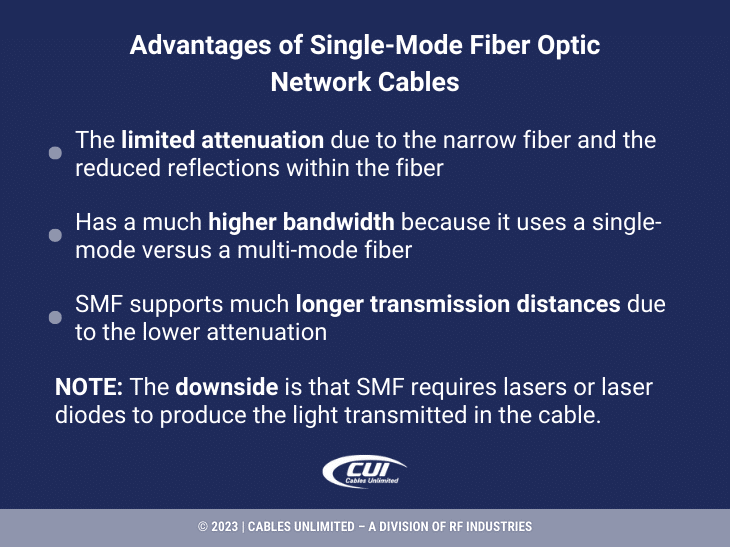
Fiber Applications in Network Cable Installations
Single-mode fiber cables are used in a wide array of applications. That includes the enterprise network connecting users, devices, and applications. It delivers digital services with high reliability and security to employees, partners, and customers. Plus, it is increasingly called upon to deliver information across the Internet of Things.
Even so, due to cost considerations, a multi-mode fiber optic cable might be a better choice within the data center. Here, much shorter distances are involved, and the lower costs and similar speeds of multi-mode might make more sense.
One of the significant advantages of fiber optic cable assemblies is that they can be manufactured and tested before they are installed in complex equipment. This significantly curtails the troubleshooting cost and time after the equipment is assembled.
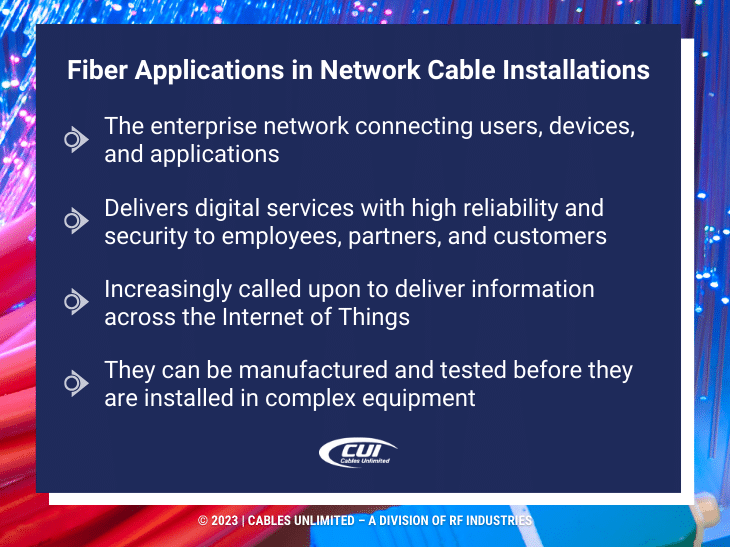
How to Choose a Cable Supplier & Manufacturer
Choosing the best cable manufacturer for your business is critical for your success and the success of your projects, not to mention keeping your customers happy. Plus, it’s not easy to manufacture fiber optic cable assemblies. It requires years of experience and deep expertise.
In our article 10 Tips for Choosing the Right Cable Harness Manufacturer we’ve outlined the key things to look for when selecting your supplier. They include expertise and experience in your industry, producing cables that match your needs, delivery speed, component sourcing capabilities, and lower product costs. You should also expect extensive design, production, and testing resources, including skilled people and the necessary equipment.
We Can Meet Your Single-Mode Fiber Needs
We’ve got you covered if you’re looking for single-mode fiber customized cables or custom fiber optic cable assemblies. The list includes fiber optic cable assemblies, DAS cables, trunk cables, patch cables, MTP®/MPO cables, macro cables, small cell cables, OptiFlex™ Hybrid Composite Cables, IP outdoor rated cable assemblies, and custom fiber optic cables.
Plus, we are a Corning Gold House Partner and work with many others to source the right materials for your fiber optic cable assemblies, wire harnesses, and hybrid cables. We also have extensive in-house capabilities.
If your requirements are already specified and ready for a quote for your current projects, we are prepared to meet your deadlines and pricing targets. Our extensive in-house services and advanced manufacturing capabilities are in place to meet your requirements.
But Cables-Unlimited offers much more than state-of-the-art manufacturing – our dedicated team is also known for going to great lengths to meet the needs of our customers, including working round-the-clock to meet tight turnaround time requirements.
Our sales representatives are standing by to assist you with product questions and quotes Monday – Friday, 8:00 am to 5:00 pm Eastern. Of course, you can also email us or complete our contact form, and we’ll get right back to you.

